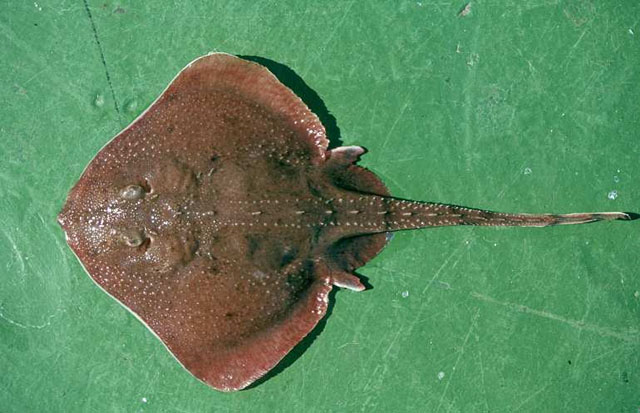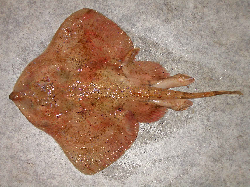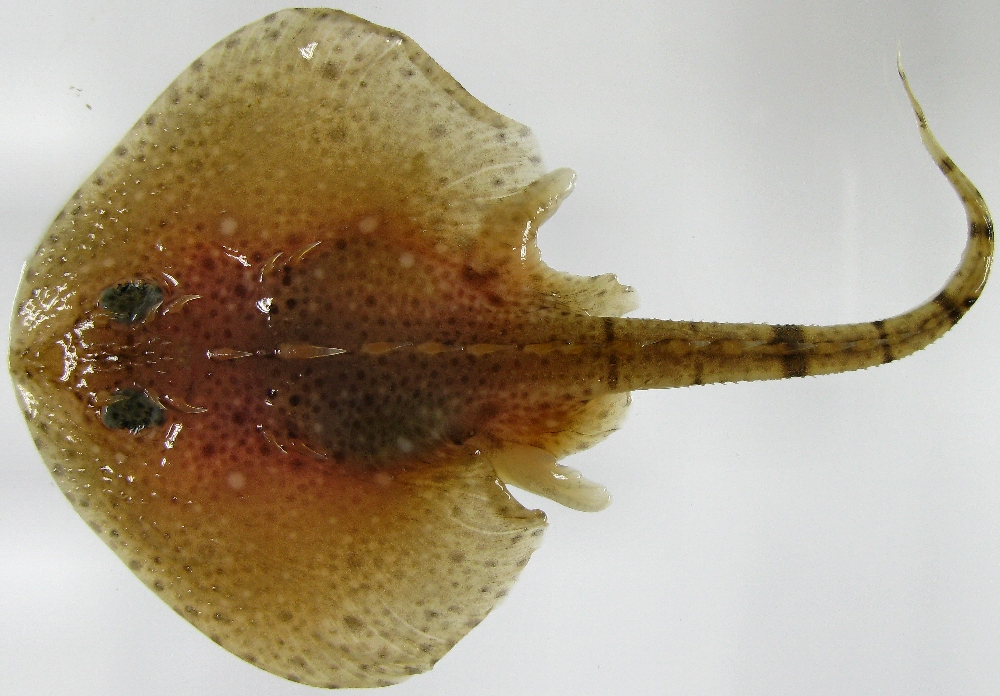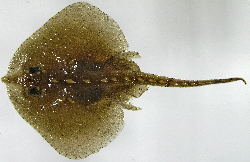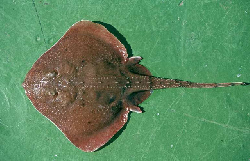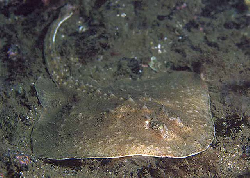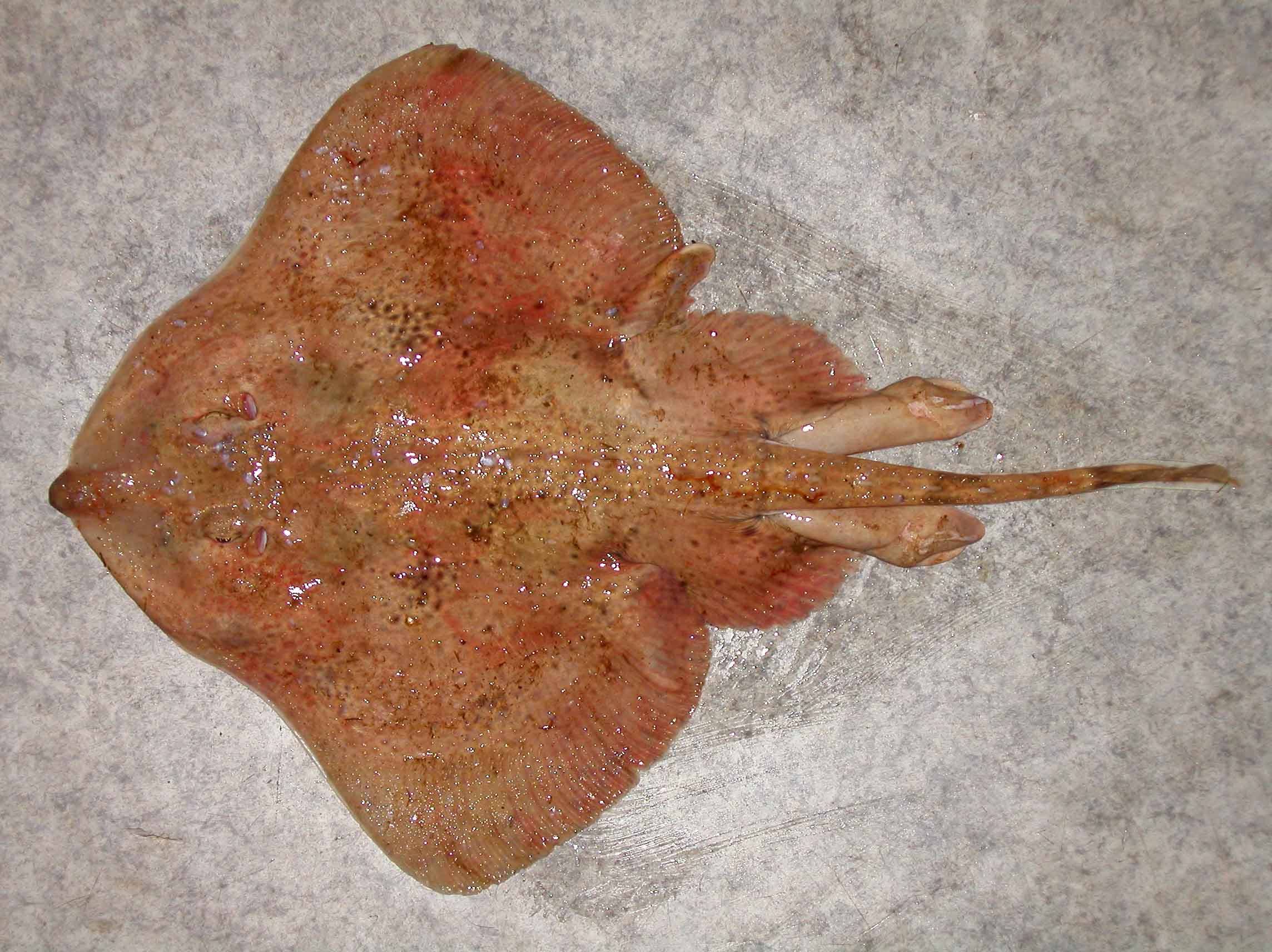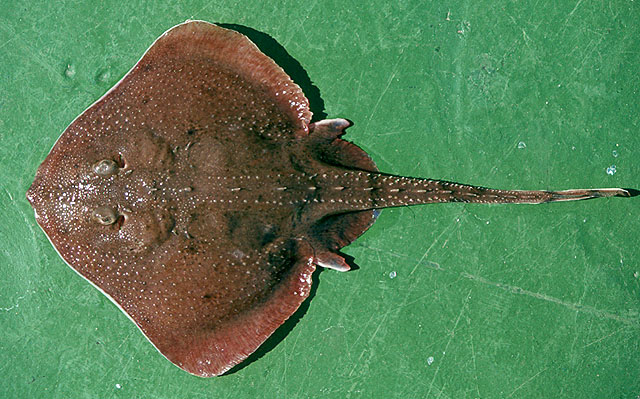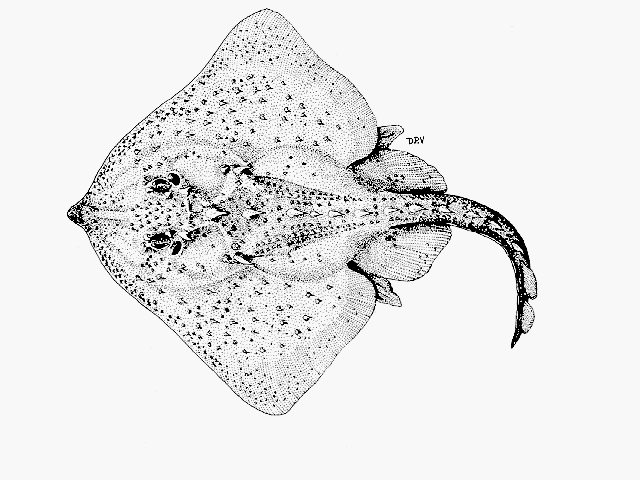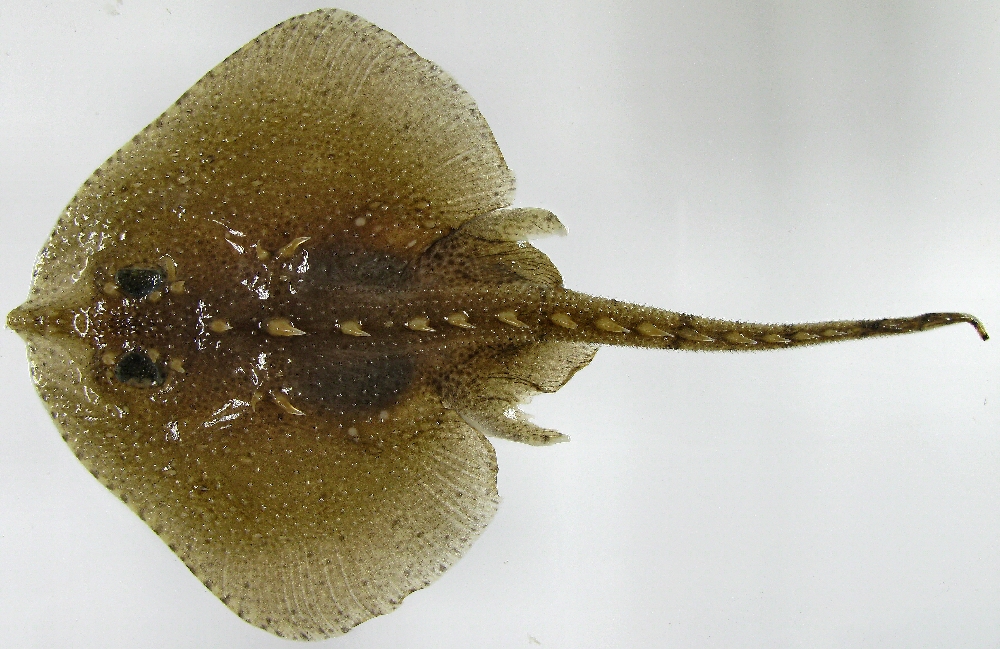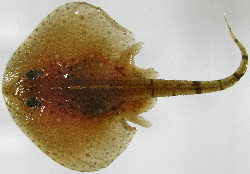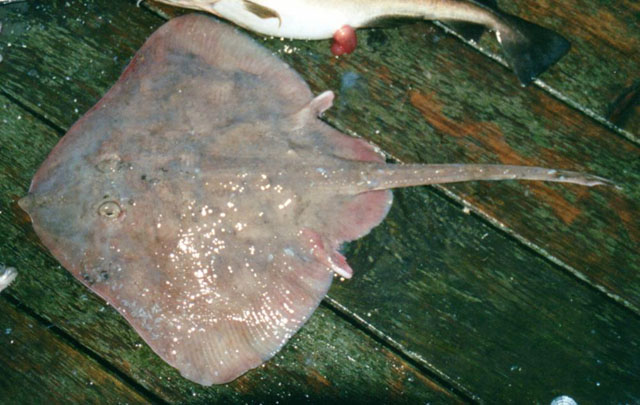Amblyraja radiata (Donovan, 1808)
Description
Dorsal spines (total): 0; Anal spines: 0. Adults are rhomboid in shape, young are rounder (Ref. 7251). Short, stiff, bluntly triangular snout; tail shorter than body (Ref. 5578). Upper surface very rough, with solid thornlets scattered all over disc and tail, underside smooth, except for some prickles on snout; a constant pattern of separate orbital thorns, a regular row of 13-17 large thorns from nape to first dorsal fin (Ref. 3167); large, close-set thorns with star-shaped bases at upper disc (Ref. 5578). Coloration highly variable; brownish grey with scattered irregular black blotches dorsally; white ventrally; with darker spots and blotches on tail and pelvic fins; black spot on tip of tail (Ref. 2708).
Common Names
Taxonomic Hierarchy
Kingdom: Animalia
Phylum: Chordata
Class: Elasmobranchii
Order: Rajiformes
Family: Rajidae
Genus: Amblyraja
Species: Amblyraja radiata (Donovan, 1808)
Climate Zone
Location
Biology
Eurybathic, eurythermic (Ref. 4426) and benthic (Ref. 58426). Cold temperate species found in offshore waters (Ref. 88171) on all kinds of bottoms (Ref. 3167), mainly sandy and muddy (Ref. 82311). In the northeast Atlantic most common between 50-100 m depth (Ref. 88187) at temperatures of 2-5 °C (Ref. 89120). Some seasonal migrations have been reported from the western Atlantic (Ref. 52109, 89121). Migration experiments showed that 85 % of tagged individuals remained within 93 km of the release site, with longest distance travelled at 180 km (Ref. 82319). Feed mainly on fish, crustaceans (Ref. 5951) and polychaete worms (Ref. 5578), but also on hydroids, molluscs, cephalopods and echinoderms (Ref. 49751); known to be a scavenger (Ref. 89122). Diet changes with increasing body size (Ref. 82311). Different populations of starry rays mature at different ages and sizes (Ref. 88171). Oviparous (Ref. 3167). Maturity size varies from 44-90 cm TL. Young hatch at ca. 8-12 cm TL (Ref. 114953). Young may tend to follow large objects, such as their mother (Ref. 205). Rarely reaches 60 cm in the North Sea (Ref. 88187). Able to detect weak electric fields generated by potential prey organisms and may also generate its own weak electric fields (Ref. 10311). Probably taken by hake trawlers (Ref. 5578). Few are dried and salted in Iceland (Ref. 6902). It is a common Skate whose landings are converted to fish-meal (Ref. 117245). It has been mentioned that North American specimens grow to a larger size than East-Atlantic specimens (Arve Lynghammar, pers.comm., 11/09).
Habitat
brackish
